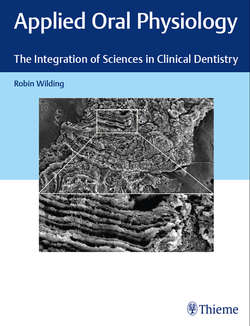Читать книгу Applied Oral Physiology - Robin Wilding - Страница 76
На сайте Литреса книга снята с продажи.
4.3.6 From Symbiont to Pathobiont
ОглавлениеA biofilm may form on suitable surface of a host, which provides moisture, food, and shelter, without doing the host any harm and may even contribute to the welfare of the host. The organisms of such a biofilm may be described as symbionts. This symbiosis has been established over many millions of years in the guts of a large variety of animal species from termites to man. How does this symbiont biofilm remain, for the most part benign, but yet clearly able to switch into a pathogenic mode?
Our commensal gut organisms not only keep out a more pathogenic flora, but contribute to the full development of our immune system and provide us with some nutrients such as vitamin K2. However, if there are even slight changes in the environment, which includes changes in the health status of the host, the balance between species may be disturbed. Certain species may become more dominant than others, and no longer be as harmless to the host. From being symbionts, they become pathobionts.
A distinction needs to be made between pathogens and pathobionts. Pathogenic organisms are understood to be capable of causing disease when introduced into a susceptible host. Pathobionts which have shifted from a symbiotic relationship to a less benign one become damaging to the host, but only when part of a consortium of other organisms have made the same shift. For example, Treponema denticola is a symbiont in the healthy gingival sulcus. It may become a pathobiont with other species causing gingivitis, but if introduced on its own to a susceptible host such as germ-free mice, gingivitis does not occur. It will only occur in the mice if the whole consortium is introduced. Pathobionts, unlike pathogens, may return to a symbiotic relationship if the balance of the ecosystem is restored to a state of health.
If broad-spectrum antibiotics are taken for any length of time, one of the side effects is disruption of the balance of resident gut organisms, which are not the target of the antibiotic. This disruption causes a shift in dominance of organisms such as Clostridium difficile, which cause diarrhea. Doctors advise patients who are taking antibiotics to eat yoghurt, which helps rebalance the intestinal flora. A more dramatic treatment for patients whose gut flora is unbalanced (e.g., Crohn’s disease) is to administer fecal transplants containing a less pathogenic spectrum of gut bacteria. It is considered by some microbiologists that most chronic, noncommunicable diseases are linked to a disordered microbiome. The term dysbiosis is used to describe the inbalance of a microbiome which leads to a shift to pathobiotic bacteria.
The most common oral diseases include dental caries, gingivitis, periodontal disease, alveolar abscess, pulpitis, periapical infection, peri-implantitis, and denture stomatitis. They are all caused by bacteria endogenous to the oral cavity, which have transformed from symbionts to pathobionts. In view of the origins of the causative organism, these oral infections should be described as noncommunicable. From this perspective, it may be useful to revisit the role of cross-infection control in dentistry.
